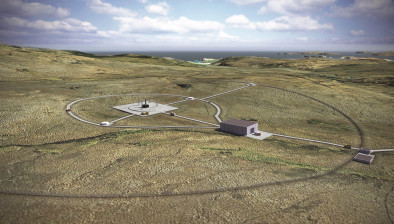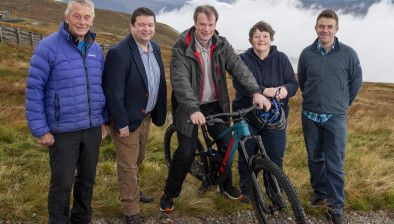Proposed capital programme seeks affordable solution to school needs across the Highlands

The Highland Council is seeking to review new build techniques and introduce greater scrutiny of spending as the local authority struggles to meet the demands for capital investment in the region’s schools.
A proposed capital programme from the council includes a significant investment of £346 million over the next five years, which could amount to as much as £481m gross depending on assumptions for grant and funding.
However, the demands on capital investment are equally significant. Highland has 203 schools operational schools, and a large number of those schools have condition, suitability or capacity pressures. As the council with the largest geographical area in Scotland, there is a hugely diverse range of buildings in terms of size, location, purpose and condition.
The proposed new capital programme is predicated on an annual affordability level of repayment and interest costs of £56.7m which equates to the current budget available for loans charges.
Budget leader, Councillor Alister Mackinnon, said: “The council’s capital programme must always balance competing demands for the resources available. As such, it is not possible to address all needs identified and proposals seek to do the best possible for communities across the Highlands.
“Some projects in the proposed capital programme have project-specific funding associated with them which can only be used for those specific projects.
“The council must also deliver investment to support expansion in Early Learning and Childcare provision to meet Scottish Government policy. The programme as proposed addresses some of the most urgent of these pressures, where the works can be incorporated and delivered within the required timescale, but in the context of a significantly reduced capital programme, cannot meet all the needs identified.
“Capital spend must be affordable, but we have some of the largest council estate in the UK, with 203 schools as well a huge road infrastructure and other funding needs. We have developed a capital programme which seeks to make the best of the funding available and accept that this will meet only some of the very real need across our communities for school renovations and improvements.
“Our capital programme has been reduced by 50% and we fully recognise that, whatever we do, we cannot meet the demands on every wish list and we have to use recognised criteria to determine where spending should take place.
“Highland is a special case, with our huge geography and significant aging estate and assets. We will be undertaking a major lobbying campaign to bring in additional Scottish Government funding for schools and roads and I will be looking to colleagues across the chamber to support this campaign to make sure Highland gets the investment it needs and deserves.”
Councillor Andrew Baxter, chair of people committee, added: “The number of schools in top condition has risen to 33, compared to 27 in 2016, however, 86 of our schools are currently rated as “poor” condition and 44 are rated as “poor” for suitability.
“To address this, we will be looking at a review of new build techniques that are proven elsewhere for schools and a much greater scrutiny of spend, using the key determinants of Condition, Suitability and Sufficiency for capital investment. We are making a strong and ambitious bid for Scottish Schools for the Future funding for secondary and primary schools and will look at identifying and bidding for other funding sources, including Gaelic funding.
“We have proposed substantial investment in schools in Easter Ross and Inverness, with Alness Academy topping the list at £34m. This is recognising the huge investment which has just gone into schools in Lochaber and Caithness.
“Whilst the criteria and timescales for Schools for the Future funding are not known at this time, we have identified immediate priority schools for such a bid, to include a Tain 3-18 campus; the Nairn and Fortrose secondaries; the schools in Invergordon; Beauly, Broadford, Dunvegan and Tarradale primaries; and the St. Clements special school.
“We also intend to bid into the subsequent Schools for the Future funding, which will include primaries in Alness and Kiltearn.
“There are around 30 primary schools across the Highlands which are either currently, or forecast to be, over capacity over the life of the capital programme so £4.6m has been identified for funding for modular units to meet additional capacity requirements.”























